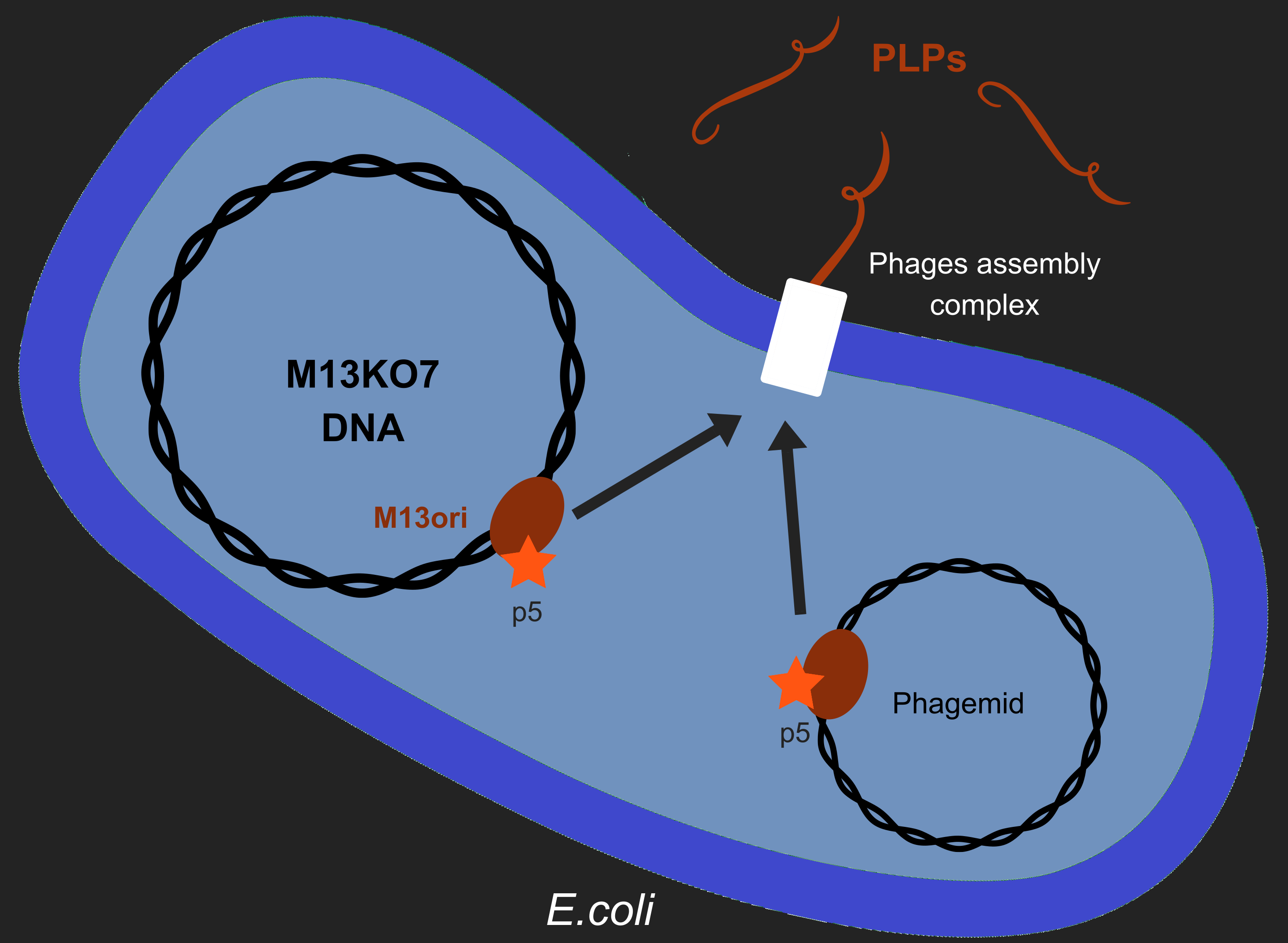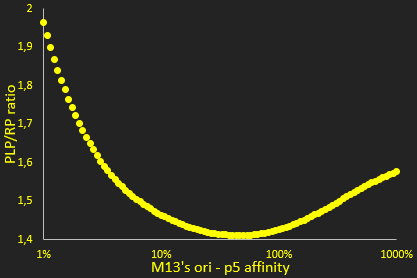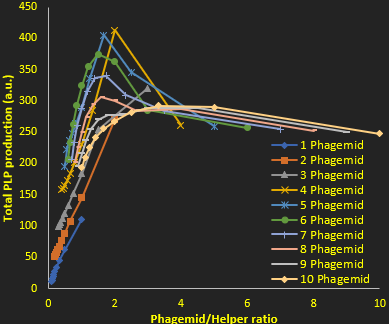m |
Erwan Eriau (Talk | contribs) (figure 4) |
||
| Line 43: | Line 43: | ||
We also observed increasing the number of transformed plasmids increased production, up to a certain point, which we determined (Figure 4). | We also observed increasing the number of transformed plasmids increased production, up to a certain point, which we determined (Figure 4). | ||
| − | |||
[[File:T--Aix-Marseille--Scan M13-p5 affinity.png|800px|center|thumb|Figure3: Scan for the M13 to P5 affinity optimizing production ratio of phage-like particle to replicating phage. This parameters is diminished in our engineered M13 origin of replication as compared to the wild-type origin of replication. | [[File:T--Aix-Marseille--Scan M13-p5 affinity.png|800px|center|thumb|Figure3: Scan for the M13 to P5 affinity optimizing production ratio of phage-like particle to replicating phage. This parameters is diminished in our engineered M13 origin of replication as compared to the wild-type origin of replication. | ||
We simulated the final PLP/RP ratio for M13 to p5 affinity varying from 1/100th to 10 times it's physiological parameters. M13's affinity for p5 is expressed as a percentage of the physiological parameter.]] | We simulated the final PLP/RP ratio for M13 to p5 affinity varying from 1/100th to 10 times it's physiological parameters. M13's affinity for p5 is expressed as a percentage of the physiological parameter.]] | ||
| + | |||
| + | [[File:T--Aix-Marseille--ScanProduction.png|800px|center|thumb|Figure4: ]] | ||
According to our model, the optimal PLP-producing cell factory will have 6 transformed phagemids and 2 helper phages. This can be controled by adjusting the quantity of DNA added in the transformation chamber. | According to our model, the optimal PLP-producing cell factory will have 6 transformed phagemids and 2 helper phages. This can be controled by adjusting the quantity of DNA added in the transformation chamber. | ||
Revision as of 20:27, 1 November 2017
Modelling PLP production

The problem
Our objective is to produce phage like particles (PLP), for this, the bacteria must contain both a helper phage and also a phagemid (Figure 1). During phage production, several key events determine which DNA molecules are packaged into phage or PLP. These involve recognition of the M13 replication origin by several phage proteins.
A major hurdle to marketing KILL XYL is obtaining the necessary authorizations. Our interviews and legislation study both showed that the number of viable phages could be a problem. We therefore decided to measure and model the ratio between viable phage and phage-like particles, and so try to optimize this ratio to facilitate the preparation of pure PLP.
The Model
We based our model on a recently published model of "wild-type" M13 replication [1] [2].
This model was modified to accomodate the fact our system has two plasmids (Helper and Phagemid) while the previously modeled system has only one. This means we incorporated: the presence of a phagemid, with its own replicative origin and M13 origin, the helper-phage E. coli plasmid origin and the modification of the helper-phage M13 origin. This was done by adapting the existing model and adding new parts to the existing model. These modifications added 9 species and 3 parameters and 13 equations to the original model, and changed 8 parts of the previous model.
The modified model is available File:T--Aix-Marseille--Model.zip
We used the initial measurement to constrain parameters of the model, along with published numbers for the number of copies of plasmids with different replicative origins.
Results
The packaging ratio depends on two main parameters: the initial ratio of transformed phagemid and helper phage (Figure 2), and the difference in p5 affinity for eitheir plasmid's M13 ori (Figure 3). In figure 2, we investigate how the ratio of PLP to replicative phage depends on the copy number of the two plasmids used. This shows that higher copy numbers of phagemid increase this ratio. For this reason in the tests we used a backbone that gives, in theory, a very high copy number for the phagemid.
We also observed increasing the number of transformed plasmids increased production, up to a certain point, which we determined (Figure 4).

According to our model, the optimal PLP-producing cell factory will have 6 transformed phagemids and 2 helper phages. This can be controled by adjusting the quantity of DNA added in the transformation chamber.
Conclusions
Clearly the initial design needs to be improved to increase the proportion of PLP produced. The model has shown as that the parameters of prime importance for determining the proportion of PLP produced are .... .
h- ↑ Smeal et al, Simulation of the M13 life cycle I: Assembly of a genetically-structured deterministic chemical kinetic simulation, Virology, 500, January 2017
- ↑ Smeal et al, Simulation of the M13 life cycle II: Investigation of the control mechanisms of M13 infection and establishment of the carrier state, Virology, 500, January 2017



